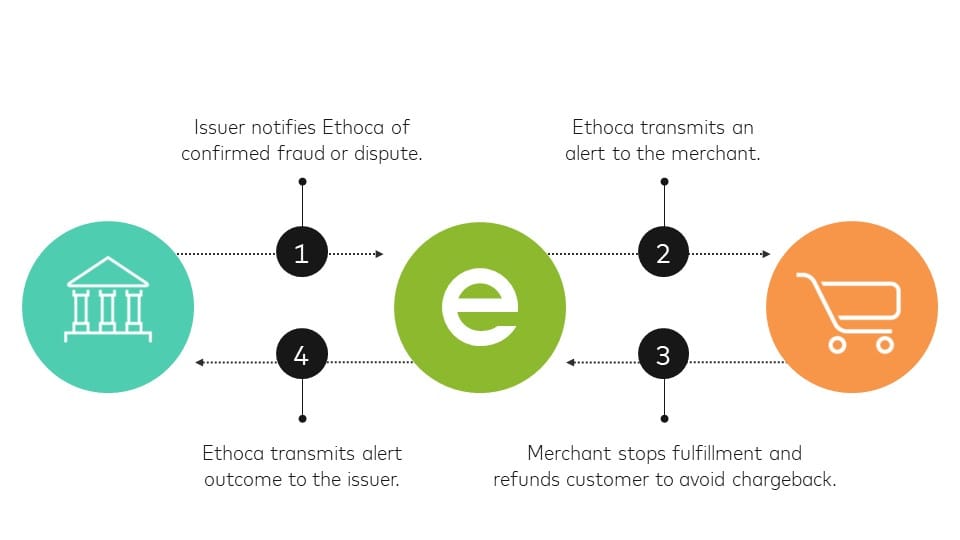
Venmo has become a popular payment platform, allowing users to easily send and receive money with just a few taps on their smartphones. While most people are familiar with using Venmo for one-time payments, many are unaware of the option to set up recurring payments.
In this blog post, we will delve into the world of recurring payments on Venmo, exploring the benefits, step-by-step process of setting them up, and how to effectively manage and troubleshoot any issues that may arise. Additionally, we will discuss the security measures in place to protect your transactions and provide tips to safeguard your Venmo account.
Furthermore, we will take a glimpse into the future of recurring payments on Venmo, highlighting upcoming features, comparing Venmo to other payment platforms, and examining the impact of digital wallets on this convenient payment method.
Whether you are looking to automate monthly bills, split expenses with friends, or make regular donations, understanding and harnessing the power of recurring payments on Venmo can simplify your financial life. So, let's dive in and explore this valuable feature together.
Introduction to Venmo and Recurring Payments
Venmo, a popular peer-to-peer payment platform, has revolutionized the way people transfer money. With its user-friendly interface and seamless integration with social media, Venmo has gained widespread adoption among millennials and beyond.
Venmo allows users to send and receive money from their bank accounts or credit cards, making it easy to split bills, pay friends back, or make purchases. What sets Venmo apart from traditional payment methods is its social aspect, where users can like and comment on transactions, adding a fun and interactive element to the process.
While Venmo is commonly associated with one-time payments, many users are unaware that they can also set up recurring payments. Recurring payments are a convenient way to automate regular financial transactions, such as monthly bills, subscription services, or recurring donations to charities.
By setting up recurring payments on Venmo, users can save time and effort by eliminating the need to manually initiate payments each month. This feature ensures that payments are made on time without the hassle of remembering due dates or entering payment details repeatedly.
In the next section, we will explore the various benefits of using recurring payments on Venmo and how they can simplify your financial management.
How to Set Up Recurring Payments on Venmo
Setting up recurring payments on Venmo is a straightforward process that can be completed within the app. Whether you want to automate monthly bills, make regular contributions to a charity, or split expenses with friends on a recurring basis, Venmo makes it easy to set up and manage these payments.
Why Recurring Payments are Useful
Before we dive into the steps of setting up recurring payments on Venmo, let's explore why this feature is useful. Here are a few benefits:
Convenience: Recurring payments eliminate the need to manually initiate transactions each time. Once set up, Venmo will automatically process the payment according to the specified schedule, saving you time and effort.
Budgeting and Financial Planning: By automating regular payments, you can better manage your finances and ensure that important bills or contributions are never missed. This helps you stay organized and avoid late fees or penalties.
Splitting Expenses: If you frequently share expenses with friends or roommates, such as rent or utilities, setting up recurring payments makes it easy to divide costs evenly without the hassle of constant reminders or calculations.
Steps to Set Up Recurring Payments
Now, let's walk through the steps to set up recurring payments on Venmo:
Open the Venmo app on your smartphone and log in to your account. Ensure that you have the latest version of the app installed to access all the features.
From the home screen, tap on the "Menu" icon, typically represented by three horizontal lines, located in the top-left corner of the screen.
In the menu, select "Settings" or "Settings & Privacy," depending on your app version.
Within the settings, locate and tap on "Payment Methods" or "Bank Accounts & Cards."
Here, you will see the payment methods linked to your Venmo account. Ensure that you have a valid bank account or credit card added to proceed with setting up recurring payments.
Once you have a payment method available, go back to the main menu and tap on "Manage Recurring Payments" or "Recurring Payments."
In the recurring payments section, you will have the option to create a new recurring payment. Tap on "Add New Recurring Payment" or a similar option.
Select the recipient or payee for the recurring payment. You can choose from your Venmo contacts or enter the recipient's email address or phone number.
Enter the payment amount and specify the frequency of the payment. You can choose options such as weekly, bi-weekly, monthly, or custom intervals.
Set the start date for the recurring payment. This is the date from which the payments will begin.
Review the details of the recurring payment, including the payee, amount, frequency, and start date. Make sure all the information is correct before proceeding.
Once you are satisfied with the details, tap on "Create" or a similar button to finalize the setup of the recurring payment.
Congratulations! You have successfully set up a recurring payment on Venmo. The app will now process the payment automatically according to the specified schedule.
Troubleshooting Common Issues
While setting up recurring payments on Venmo is usually a smooth process, you may encounter some common issues or questions. Here are a few troubleshooting tips:
Payment Method: Ensure that you have a valid payment method linked to your Venmo account. If you receive an error during the setup process, double-check that your bank account or credit card is active and not expired.
Insufficient Funds: Make sure you have sufficient funds in your linked bank account or credit card to cover the recurring payment. If there are insufficient funds, the payment may fail, leading to potential fees or penalties.
Updating or Cancelling Recurring Payments: If you need to make changes to an existing recurring payment or cancel it altogether, you can do so by accessing the "Manage Recurring Payments" section within the Venmo app. From there, you can edit payment details or choose to stop the recurring payment.
In the next section, we will explore how to effectively manage your recurring payments on Venmo, including editing or canceling payments and understanding Venmo's payment limits.

Managing Your Recurring Payments on Venmo
Once you have set up recurring payments on Venmo, it is essential to know how to effectively manage them. This section will guide you through the various aspects of managing your recurring payments, including editing or canceling payments, understanding Venmo's payment limits, and dealing with failed recurring payments.
How to Edit or Cancel Recurring Payments
At times, you may need to make changes to your recurring payments or cancel them altogether. Venmo provides convenient options to edit or cancel recurring payments within the app. Here's how you can manage your recurring payments:
Open the Venmo app on your smartphone and log in to your account.
From the home screen, tap on the "Menu" icon, usually represented by three horizontal lines, located in the top-left corner of the screen.
In the menu, select "Manage Recurring Payments" or "Recurring Payments."
Here, you will see a list of your active recurring payments. Find the payment you wish to edit or cancel and tap on it.
Within the payment details, you will have options to edit the payment amount, frequency, start date, or recipient. Make the necessary changes as required.
If you wish to cancel the recurring payment, look for the "Cancel" or "Stop Recurring Payment" option and tap on it. Confirm your decision when prompted.
It's important to note that any changes made to recurring payments may affect future transactions. Therefore, it's advisable to review and update the details well in advance to avoid any disruptions.
Understanding Venmo's Payment Limits
Venmo has certain payment limits in place to ensure security and prevent fraudulent activities. These limits may impact your recurring payments, especially if you have larger payment amounts or frequent transactions. Understanding these limits is essential to effectively manage your recurring payments. Here are some key points to keep in mind:
Transaction Limits: Venmo imposes limits on individual transactions, typically based on a rolling 30-day period. These limits may vary depending on factors such as account verification, transaction history, and user activity. It's important to check your account's specific transaction limits to ensure your recurring payments fall within the allowed range.
Payment Frequency: Venmo's payment limits also apply to the frequency of transactions. If you have recurring payments set up for a high frequency, such as daily or weekly, it's crucial to ensure that the cumulative amount over the specified time period does not exceed the transaction limits.
Account Verification: Verifying your Venmo account can help increase your payment limits. To verify your account, you may need to provide additional information, such as your social security number or identification documents. Higher account verification can provide more flexibility in managing recurring payments.
It's recommended to regularly review your payment limits and adjust your recurring payments accordingly to ensure they align with Venmo's guidelines.
How to Deal with Failed Recurring Payments
Occasionally, you may encounter issues with your recurring payments, such as failed transactions. It's important to address these failures promptly to avoid any disruptions to your financial commitments. Here are some steps to deal with failed recurring payments:
Check Payment Method: Verify that the payment method linked to your Venmo account is valid and has sufficient funds to cover the recurring payment. If there are any issues with the payment method, update it or choose an alternative method.
Retry the Payment: If a recurring payment fails, Venmo will typically attempt to process the payment again within a specific timeframe. However, if the payment continues to fail, you may need to manually initiate the payment or contact Venmo's customer support for assistance.
Contact Customer Support: If you are unable to resolve the issue on your own, reach out to Venmo's customer support for further assistance. They can provide guidance on troubleshooting the failed payment and help ensure that your recurring payments are processed successfully.
By promptly addressing and resolving failed recurring payments, you can maintain a smooth financial flow and avoid any potential penalties or disruptions.
In the next section, we will discuss the security measures in place to protect your recurring payments on Venmo and provide best practices to safeguard your account.
Security Measures for Recurring Payments on Venmo
When it comes to managing recurring payments on Venmo, ensuring the security of your transactions and protecting your account is of utmost importance. Venmo has implemented various security measures to safeguard your payments, but it's essential to take additional steps to enhance your account's security. In this section, we will explore the security measures in place, provide best practices to protect your account, and discuss what to do in case of unauthorized transactions.
How Venmo Ensures Secure Transactions
Venmo prioritizes the security of its users' transactions and has implemented several measures to protect against unauthorized access and fraudulent activities. Here are some key security features:
Encryption: Venmo employs end-to-end encryption, which ensures that your payment information is securely transmitted between your device and the Venmo servers. This encryption helps protect your financial data from being intercepted by unauthorized individuals.
Two-Factor Authentication (2FA): Venmo supports two-factor authentication, an additional layer of security that requires you to provide a second form of verification, such as a unique code sent to your mobile device, when logging in or making certain transactions. Enabling 2FA adds an extra level of protection to your Venmo account.
Account Alerts: Venmo offers account alerts that can notify you of any suspicious activity on your account, such as large transactions or changes to your account settings. These alerts can help you quickly identify and address any potential security threats.
Buyer and Seller Protection: Venmo provides buyer and seller protection for eligible transactions, offering reimbursement in case of unauthorized or fraudulent activity. However, it's important to review Venmo's terms and conditions to understand the specific situations covered by these protections.
While Venmo takes significant measures to ensure secure transactions, it's important to remain vigilant and actively protect your account.
Best Practices to Protect Your Account
In addition to the security measures implemented by Venmo, there are several best practices you can follow to enhance the security of your Venmo account and protect your recurring payments. Here are some recommendations:
Strong Password: Use a strong, unique password for your Venmo account, combining uppercase and lowercase letters, numbers, and special characters. Avoid using easily guessable passwords or reusing passwords from other accounts.
Enable Two-Factor Authentication: Activate two-factor authentication for your Venmo account to add an extra layer of security. This helps protect your account even if someone gains access to your password.
Regularly Update the App: Keep your Venmo app updated with the latest version to ensure you have the most recent security patches and enhancements.
Be Cautious with Links and Phishing Attempts: Avoid clicking on suspicious links or providing personal information in response to unsolicited emails, messages, or calls. Scammers may attempt to trick you into revealing your Venmo login credentials or other sensitive information.
Secure Your Device: Ensure that your smartphone or other devices used to access Venmo have up-to-date security software installed. Use biometric authentication, such as fingerprint or facial recognition, to unlock your device whenever possible.
What to Do in Case of Unauthorized Transactions
If you notice any unauthorized transactions on your Venmo account, it's crucial to take immediate action to protect your funds and secure your account. Here are the steps to follow:
Secure Your Account: Change your Venmo password immediately to prevent further unauthorized access.
Contact Venmo Support: Report the unauthorized transactions to Venmo's customer support as soon as possible. They can investigate the issue, provide guidance, and take appropriate action to resolve the situation.
Monitor Your Account: Regularly review your Venmo account activity and transaction history to identify any unusual or unauthorized transactions. If you notice anything suspicious, report it to Venmo immediately.
By following these security measures and best practices, you can safeguard your recurring payments on Venmo and protect your account from potential security threats.
In the next section, we will explore the future of recurring payments on Venmo, including upcoming features, a comparison with other payment platforms, and the impact of digital wallets on this payment method.
The Future of Recurring Payments on Venmo
As technology continues to evolve, so does the world of recurring payments on Venmo. In this section, we will explore the future of recurring payments, including upcoming features, a comparison with other payment platforms, and the impact of digital wallets on this popular payment method.
Upcoming Features for Recurring Payments
Venmo is constantly working on enhancing its features and expanding its offerings. While specific details may change over time, here are some potential upcoming features for recurring payments on Venmo:
Advanced Scheduling Options: Venmo may introduce more flexibility in scheduling recurring payments, allowing users to choose specific days of the week or month for their transactions.
Payment Reminders: To ensure users never miss a recurring payment, Venmo may introduce automated payment reminders, sending notifications before the payment is due.
Integration with Billers and Service Providers: Venmo may partner with more billers and service providers, allowing users to set up recurring payments directly through their Venmo accounts, eliminating the need for manual entry.
How Venmo Compares to Other Payment Platforms
While Venmo is a popular payment platform, it's essential to understand how it compares to other payment platforms in terms of recurring payments. Here are some key points to consider:
PayPal: As the parent company of Venmo, PayPal offers similar services, including recurring payments. However, PayPal is often used for more extensive business transactions, while Venmo is primarily focused on peer-to-peer payments among individuals.
Zelle: Zelle is another popular peer-to-peer payment platform that allows users to send and receive money. However, as of now, Zelle does not provide a built-in option for recurring payments, making Venmo a more suitable choice for automated transactions.
Digital Banking Apps: Many digital banking apps, such as Chase, Bank of America, and Ally, offer recurring payment features. However, these apps are primarily focused on banking services, while Venmo provides a more social and interactive payment experience.
When considering which payment platform to use for recurring payments, it's important to evaluate your specific needs, the features offered, and the level of convenience and security provided by each platform.
The Impact of Digital Wallets on Recurring Payments
Digital wallets, including Venmo, have significantly impacted the way we make payments and manage financial transactions. The rise of digital wallets has brought about several changes in the realm of recurring payments. Here are a few key impacts:
Convenience: Digital wallets like Venmo provide a convenient way to automate recurring payments, eliminating the need for manual entry or remembering due dates. This convenience simplifies financial management and saves time for users.
Increased Financial Awareness: With recurring payments on digital wallets, users have a clear record of their regular transactions, making it easier to track expenses and manage budgets effectively.
Integration with other Apps and Services: Digital wallets are increasingly integrating with other apps and services, allowing users to set up recurring payments for a wide range of purposes, from fitness subscriptions to utility bills.
As digital wallets continue to evolve, we can expect further innovation and integration of recurring payment features, making financial management even more seamless and efficient.
In conclusion, recurring payments on Venmo offer a convenient way to automate regular financial transactions. With upcoming features, strong security measures, and the continued development of digital wallets, the future of recurring payments looks promising. By understanding the benefits, managing your payments effectively, and staying informed about upcoming developments, you can make the most of recurring payments on Venmo and simplify your financial life.


